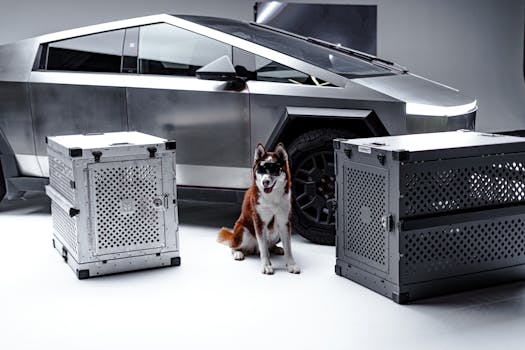Automotive marketing occupies a unique and vital space within the larger framework of the business world. Understanding this niche is essential for anyone engaged in the automotive industry. From manufacturers and dealers to marketers, a grasp on automotive marketing strategies can drive sales significantly.
At its core, automotive marketing is about connecting vehicles with potential customers. The approach focuses on showcasing vehicles’ features, benefits, and performance characteristics, ensuring that consumers make informed purchasing decisions. It requires both skill and creativity to craft campaigns that resonate deeply with target audiences.
With the rapid advancements in technology and changing consumer preferences, automotive marketing is in a constant state of evolution. Examining its various components can illuminate paths to success, strengthening connections between brands and customers.
Understanding the Automotive Market
The automotive market is vast and varied, encompassing a range of vehicles, from sedans and SUVs to trucks and electric models. Understanding this landscape is critical.
Identifying different market segments is essential for effective automotive marketing. These segments often include demographics such as age, income, and lifestyle preferences. By categorizing these segments, marketers can tailor their messages accordingly.
Moreover, analyzing competitors allows brands to understand their journey to market. Recognizing competitor strengths and weaknesses can cultivate better strategies. Smart insights empower brands to differentiate themselves effectively.
The growing popularity of electric vehicles is one clear trend in the automotive market. Consumer awareness around sustainability is influencing purchasing decisions. Brands that align with these values position themselves strategically.
Overall, keeping abreast of market trends and consumer behavior patterns is vital. The evolving automotive landscape means that brands must remain adaptable to meet consumer demands.
Key Components of Automotive Marketing
Automotive marketing comprises various elements, including advertising, social media, public relations, and sales strategies. Each component serves a unique purpose in driving awareness and interest.
Advertising is often the most visible part of automotive marketing. It encompasses various channels such as print, television, digital, and out-of-home. Effective advertising campaigns reach target demographics precisely.
Social media offers a platform for brands to engage with consumers directly. By using platforms like Instagram and Facebook, brands can showcase vehicles and build a community around their products.
Public relations play a crucial role in shaping a brand’s image. Press releases, influencer partnerships, and event sponsorships help cultivate positive perceptions and credibility.
Lastly, incorporating effective sales strategies ensures the seamless transition from marketing to purchase. Strong follow-up processes, responsive customer service, and enticing promotions enhance the buying experience.
The Role of Digital Marketing in the Automotive Industry
Digital marketing has revolutionized automotive marketing strategies over the last decade. As consumers increasingly turn to online platforms, brands must adjust accordingly to thrive.
Search engine optimization (SEO) helps automotive websites rank higher in search results. By optimizing content with relevant keywords, brands can drive organic traffic and generate leads.
Search engine marketing (SEM) is another crucial element. Pay-per-click (PPC) advertising raises visibility while targeting specific localities, helping brands attract potential buyers effectively.
Content marketing adds value by offering consumers useful information. Blogs, articles, and videos about vehicle maintenance or industry trends foster customer loyalty and engagement.
Finally, utilizing data analytics is vital for understanding marketing impacts. Brands can leverage insights from consumer interactions to refine their strategies continually, increasing conversion rates.
Building a Strong Brand Presence
A strong brand presence sets successful automotive companies apart in a crowded market. This presence is shaped through consistent messaging and visual identity.
First and foremost, creating a distinctive brand identity is essential. Logos, colors, and fonts should reflect the brand’s values and resonate with target audiences effectively.
Consistency in messaging across various platforms strengthens brand recognition. Consumers appreciate authenticity and are more likely to trust brands that maintain a coherent voice and image.
Engaging storytelling can elevate a brand’s reputation. By crafting narratives that connect with consumers’ values, brands can build emotional connections.
Finally, actively managing brand reputation through customer feedback and reviews can enhance trust. Responding to both positive and negative feedback fosters loyalty and demonstrates commitment to customers.
Targeting Customers Effectively
Effective targeting in automotive marketing ensures that brands reach the right customers with the right message. Understanding customer personas plays a pivotal role in this process.
Creating customer personas involves analyzing demographic information, preferences, and behaviors. By building detailed profiles, marketers can tailor communication to resonate meaningfully.
Utilizing advanced data analytics further refines targeting efforts. Brands can segment audiences based on their online behavior, ensuring that marketing campaigns yield better results.
Implementing retargeting strategies is also beneficial in automotive marketing. By serving targeted ads to consumers who previously showed interest, brands can increase engagement and conversion rates.
Lastly, leveraging geographic targeting can optimize local marketing efforts. Brands can focus on specific regions to promote offerings that best suit local consumer needs and preferences.
Innovations in Automotive Marketing
Innovation in automotive marketing drives brands to explore creative avenues to engage customers. New technologies and concepts have transformed traditional marketing paradigms.
The use of augmented reality (AR) and virtual reality (VR) is gaining momentum. These technologies allow customers to experience vehicles virtually, enhancing the buying journey significantly.
Chatbots and AI-driven customer service solutions are becoming increasingly common. These tools provide instant assistance and enhance user experience on websites and social media platforms.
User-generated content (UGC) is another powerful trend. Encouraging satisfied customers to share their experiences fosters authenticity and builds community around a brand.
Finally, experiential marketing offers immersive activities that promote brand engagement. Hosting events where consumers can test drive vehicles or participate in brand experiences creates lasting memories.
Measuring Success in Automotive Marketing
Measuring success in automotive marketing requires tracking specific metrics that indicate performance. Key performance indicators (KPIs) illuminate the effectiveness of marketing strategies.
Website traffic serves as a primary indicator of online interest. Analyzing user engagement metrics can provide insights into behavior and consumer reception.
Lead generation rates highlight the effectiveness of various campaigns. Understanding which channels generate the most leads can help brands allocate resources efficiently.
Conversion rates are critical for evaluating the overall success of marketing efforts. Assessing how often leads turn into sales yields valuable information about the consumer journey.
Lastly, customer retention rates can measure long-term success. Brands that cultivate loyalty and repeat purchases establish a solid foundation for sustained growth.
Conclusion
Understanding automotive marketing is essential for brands aiming to thrive in a competitive landscape. By comprehending market segments, embracing innovation, and leveraging digital strategies, companies can strengthen their reach and impact.
Effective targeting and brand presence are pivotal for engaging customers meaningfully. As the automotive industry continues to evolve, so too will the strategies that marketers employ.
In a dynamic environment driven by trends and technology, staying informed and adaptable is crucial. The road ahead is littered with opportunities for those willing to explore and innovate.
| Marketing Component | Purpose | Channel Examples |
|---|---|---|
| Advertising | Raise awareness and drive interest | TV, print, digital |
| Social Media | Engage consumers directly | Facebook, Instagram |
| Public Relations | Manage brand image | Press releases, events |
| Data Analytics | Refine marketing strategies | Google Analytics, CRM tools |
| Content Marketing | Provide value and build loyalty | Blogs, videos |
- Focus on market segments.
- Utilize digital channels effectively.
- Engage customers through storytelling.
- Incorporate innovative technologies.
- Measure performance with relevant metrics.


